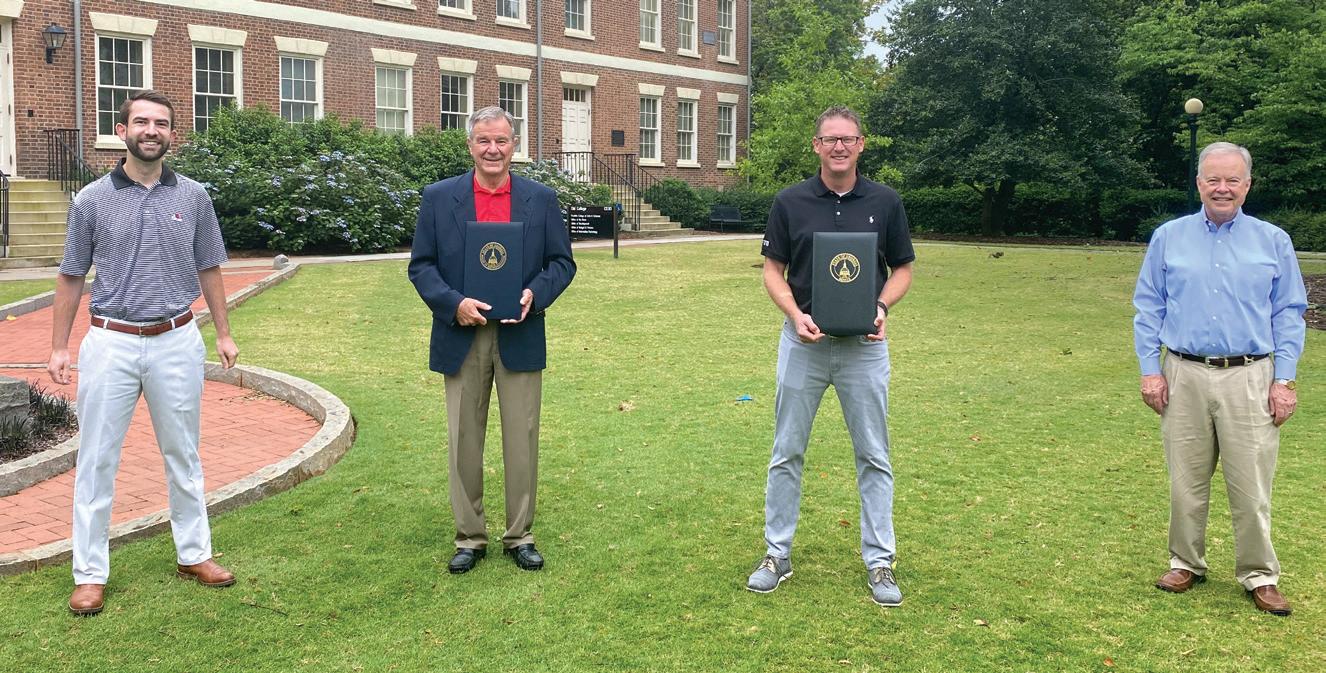
20 minute read
Surviving the summer Heat load impacts on trees
Surviving the summer
Heat load impacts on trees
by Dr.. Kim D. Coder, Professor of Tree Biology & Health Care, University Hill Fellow, Warnell School, UGA
Summer provides many hot days for
people and trees. Figure 1 shows the historic number of days per year with temperatures above 90o F for Georgia. Much of tree growth is impacted by the interaction of water availability and heat load. Many old, young, and soillimited trees can be damaged by elevated heat loads. The combination of drought and harsh site conditions provided by parking lots, along streets, on open squares, and associated with surrounding pavement can lead to a number of tree problems. An old term “heat stroke” can be used with trees where heat loads are extreme and have led to growth and survival problems.
Temperature
Trees find optimum growing conditions across a range of temperatures from 70o F to 85o F. Hot temperatures can injure and kill living tree tissues. A thermal death threshold is reached at approximately 115o F. The thermal death threshold varies depending upon duration of hot temperatures, absolute highest temperature reached, tissue age, thermal mass, water content of tissue, and ability of a tree to make adjustments with temperature changes.
Tree temperature usually runs just at or slightly above air temperature in sunlight. Trees dissipate heat by long-wave radiation, convection of heat into surrounding air, and transpiration (water loss from leaves). Transpiration is a major mechanism for dissipation of tree heat loads. Without transpirational cooling, more ineffective means are used to dissipate heat like radiation to surroundings, and wind cooling.
Water control
Trees can dissipate tremendous heat loads if allowed to function normally, and with adequate soil moisture. Unfortunately, hot temperatures greatly increase water vapor pressure deficient (dryness of the air) which cause leaf stomates to close because of rapid water loss, and so limit transpirational cooling. When transpiration is limited by hot temperatures, and a tree is surrounded by non-evaporative surfaces (hard surfaces), leaf temperatures may rise above the thermal death threshold.
Normal range of water tension (content) over which tree growth occurs is -0.2 to -12 bars. Drought damage occurs in a leaf as -15 to -20 bars is approached. The gradient between the inside of a leaf at 100% relative humidity (0 bars) and the surrounding atmosphere can be great. Figure 2. For example, fog can be 100% relative humidity while rain downpours range from 90% to 98% relative humidity. Trees lose water even during rain storms because at 98% relative humidity, the air is 100 times drier than the inside of a leaf.
Keeping up
Associated with rapid water loss and temperature increases in leaves is a delay or time lag in water absorption by roots. Leaves can lose
4 4
Figure 1: Long-term average number of days
4above 90o F. (30 year annual Georgia average rounded to next highest class.)

Figure 2: Estimated water potential (bars) of air for various relative humidity values (in percent) and air temperatures (F0).

water much faster than roots can absorb water. The difference between water loss from a tree and water gain through root absorption can generate many problems. Figure 3 provides a generalized view of tree water movement with leaf transpiration and root absorption. Note that a noon-time slow-down in transpiration is caused in-part by water shortages in leaves, which cause stomates to close.
Water shortages developed in the day are corrected as completely as soil resources allow by water uptake in roots at night. The force or energy for this nighttime water absorption (when stomates are closed) is through tension (negative pressure) in water columns which remains from the previous day. This tension force pulls water into a tree. Night uptake by roots can amount to 20-40% of total tree water needs.
Hot water Heat injury is difficult to separate from water 4 problems because water and temperature in trees are closely bound together in biological and physical processes. Water shortages and heat buildup are especially critical in leaves, and secondarily, in cambial and phloem area of twigs and branches. On an average site, a difference of 22o F and 60% relative humidity can occur over a single day. Figure 4. Increased temperatures increase vapor pressure deficit Figure 3: Relative difference between leaf transpiration and root absorption of water in a tree during a warm sunny day with adequate soil moisture.
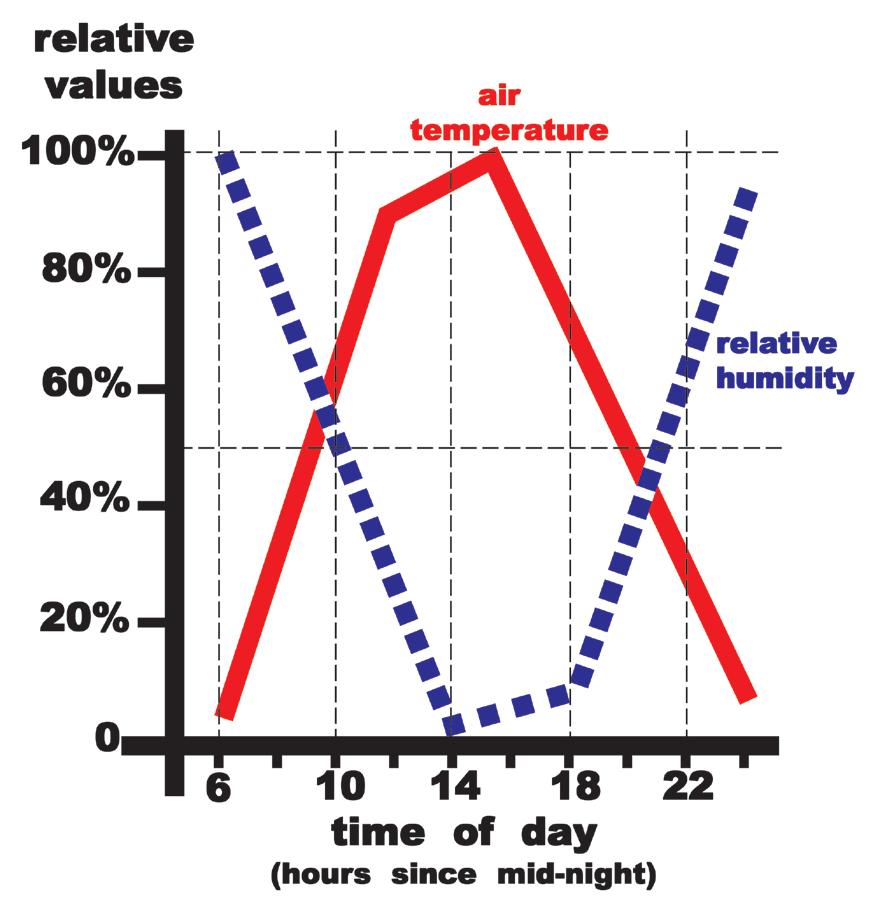
Figure 4: Relative change over a summer day between air temperature and relative humidity.
between leaves and atmosphere, as well as increasing diffusion and mass flow rates of water through tree tissues. Figure 5.
In tree leaves, wilting is the first major symptom of water loss excesses and heat loading. Leaves under heavy heat loads may progress through senescence (if time is available), brown-out and

Hot air Long distance movement of energy across a 4 landscape is by advected heat. Advected heat is generated when hard dense surfaces heat the air above them. This advected heat is carried on the wind, heating and drying tree tissues as it passes.
Advected heat from neighboring hardscapes can heat and dry landscapes and trees, powering excessive water evaporation to dissipate heat generated somewhere else. Wind also decreases the protective tree surface boundary layer resistance to water movement around tree tissues and can lead to quick dehydration.
Structures and topographic features can modify or block advected heat flows across a site.
Double trouble
Daytime energy exchanges and associated temperature increases provide for the greatest heat load, but night temperatures are also critical for many tree growth mechanisms, especially new leaves and reproductive structures. Night temperatures are critical for controlling respiration rates in the whole tree and soil environment. The warmer the temperature, the geometrically faster respiration precedes.
As a general rule, each temperature step, beginning at 40o F and continuing through 58o F, 76o F, 94o F, 112o F, and 130o F, allow physical doubling of tree respiration and water loss. Figure 6. Gross photosynthesis generally doubles up to 94o F and then rapidly falls off.
Respiration in all living tree tissues continues to rapidly climb until thermal death levels are reached. Heat stroke in trees is a series of metabolic dysfunctions and physical constraints which pile up inside trees and become impossible to adjust, avoid, or correct. Figure 7.
Additional stress
Since processing nitrogen is physiologically demanding, moderate concentrations of nitrogen fertilizers can lead to tissue and system damage under large heat loads. The internal processing of nitrogen fertilizer inputs require stored food (CHO) in roots to be used. When no food is being produced in a tree, transport systems are only marginally functional, and respiration is accelerating, nitrogen applications
Figure 5: Effects of temperature changes on water vapor pressure deficity (- vpd = shaded area), or dryness of the air.
4
Figure 6: Water use doubling sequence for trees exposed to increasing heat loads. For each 180 F (100 C) site temperature increase above 400 F, water use by tree and site double from physical impacts of heat loading. 4
finally abscise. Leaves quickly killed by heat are usually held on a tree by tough xylem tissue and lack of abscission zone preparation. Rewatering after heat damage and drought may initiate quick leaf abscission.
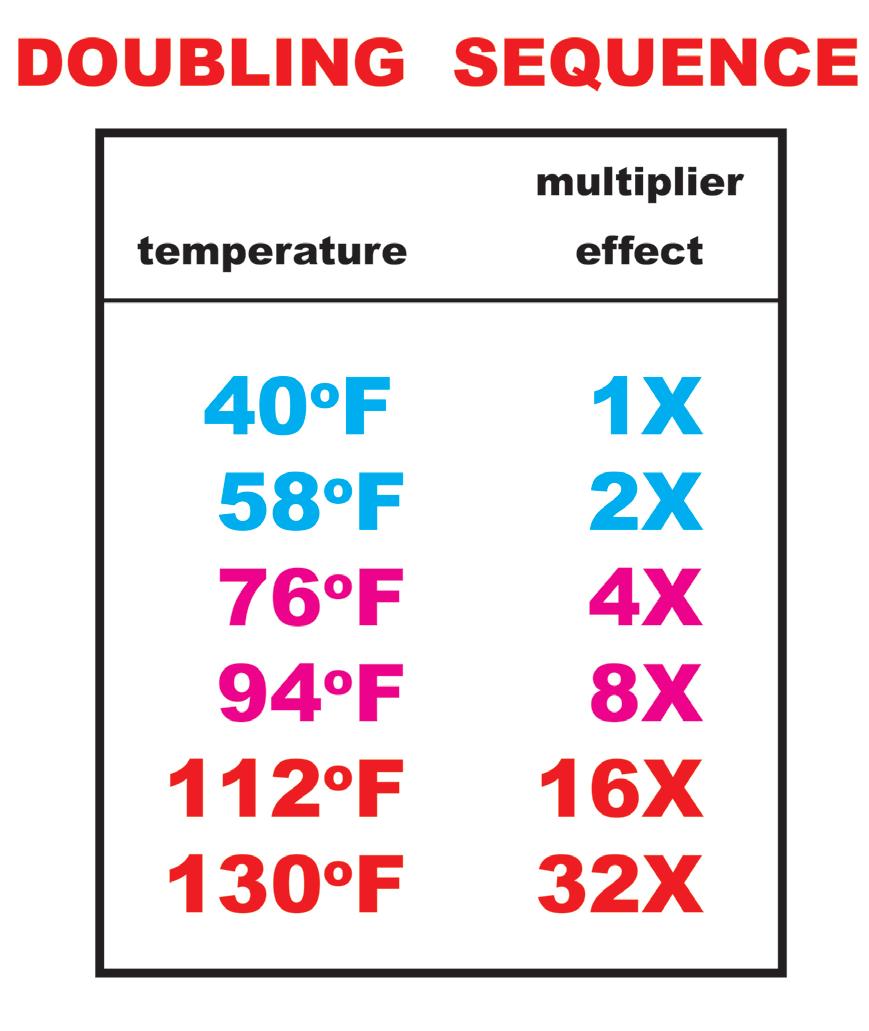
should be withheld. Excessive heat loads and supplemental nitrogen lead to excessive root food use. Fertilizer salt contents or activity in a soil can also be damaging when soil moisture is limiting.
Heat stress problems make trees more susceptible to pests and other environmental problems. A number of pathogens are more effective attacking trees under water or heat stress. Heat injury includes scorching of leaves and twigs, sunburn on branches and stems, leaf senescence and abscission, acute leaf death, and shoot and root growth inhibition. These damage symptoms can facilitate pest entrance into a tree. Loss of defensive capabilities and food supplies allow some otherwise uncommon or minor pests to effectively attack trees. base area). Heat lesions are usually first seen on the south/southwest side of stems.
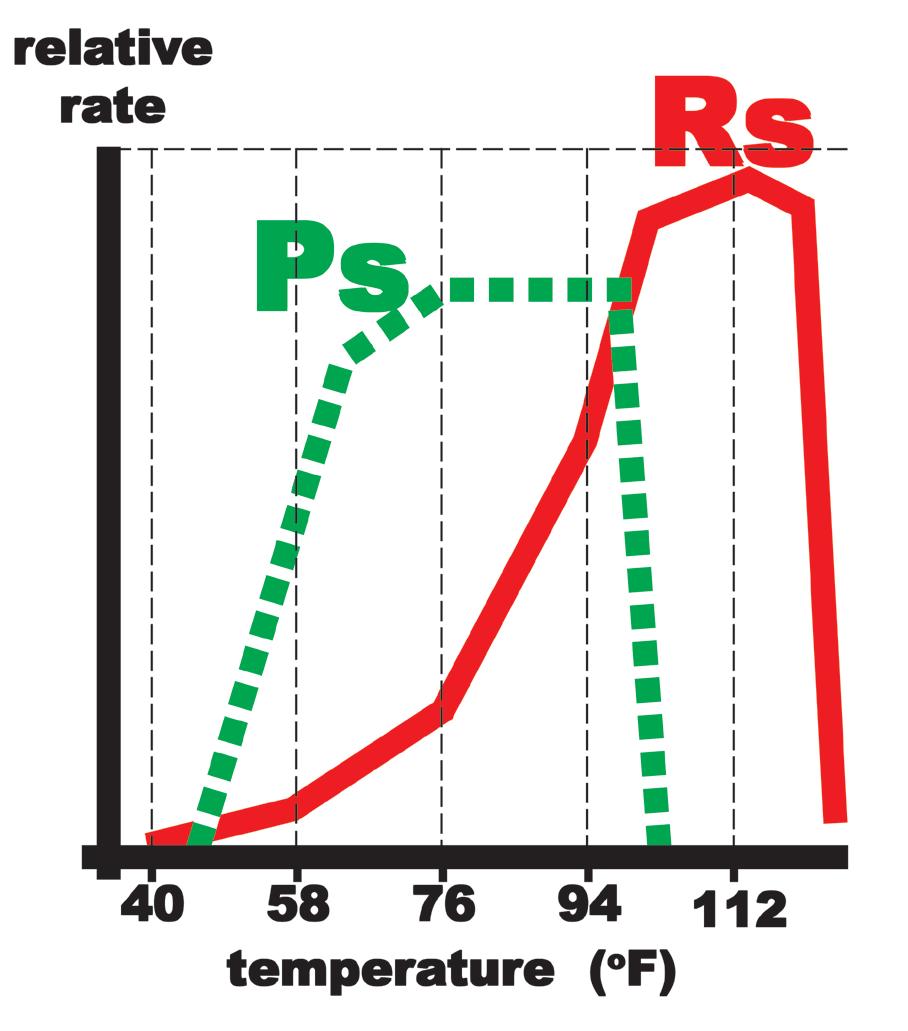
The absolute temperature reached above optimal function partially determines the recovery time needed. Figure 8. The duration of hot temperatures cannot exceed a tree’s ability to adjust, avoid, or repair problems, or death results. Less absolute amounts of sensible heat are needed to damage trees as the duration of hot temperature periods lengthen. In other words, the more dysfunctional and disrupted growth functions become due to heat loading, the easier it is to develop further stress problems. Melting membranes Living tree cell membranes are made of a 4 double layer of lipids (fats/oils) which enclose the living portions of a cell. As temperature Hot soil The soil surface can be both a heat reflecting 4 increases, membranes become more liquid (similar to heating butter and watching it and absorbing layer. In full sunlight, dry dense melt). As temperatures increase, cells use two soils can reach 150o F. This heat can be radiated strategies to maintain life; one is to increase the and reflected into a landscape and onto trees saturated fat proportion in membranes, and the causing tremendous heat loading. Excessive heat second is to increase structural proteins holding loading causes large amounts of water to be membranes together. As temperatures continue transpired, initiates major metabolic problems, to climb, enzymes and structural proteins are and can generate heat lesions just above the inactivated or denatured. Respiration deadground/tree contact juncture (root collar -- stem ends and by-products produce toxic materials which are difficult to transport away or destroy, compartmentalize, or excrete. Tree cell death is the end result.
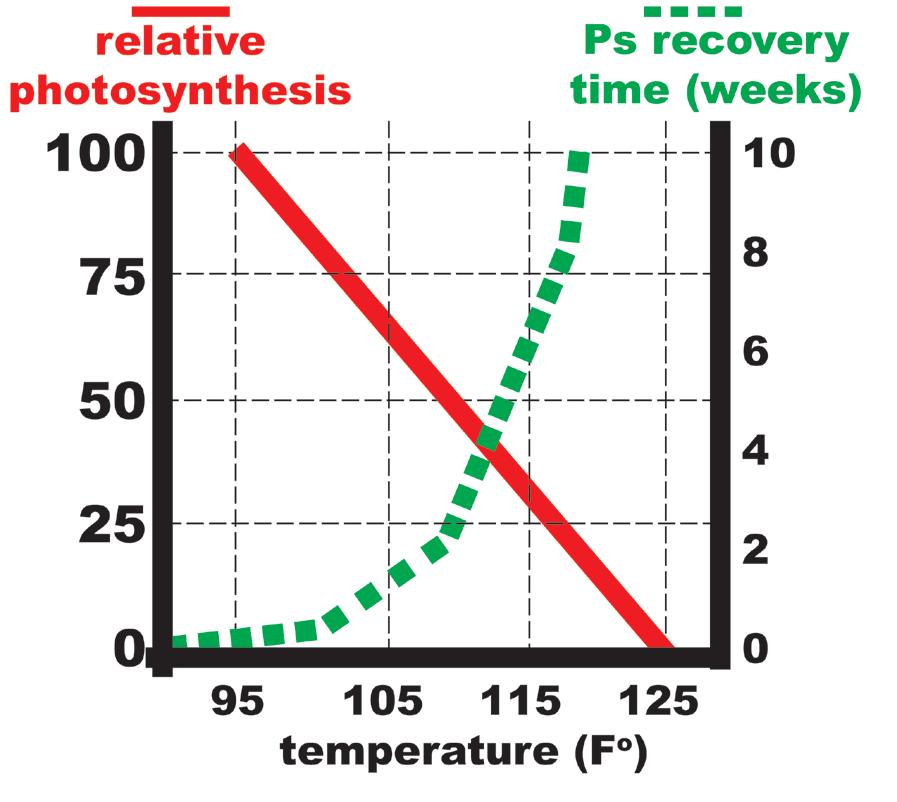
Figure 7: The relative rates of photosynthesis (Ps) and respiration (Rs) in a tree under increasing temperatures. Figure 8: Photosynthesis impact from high temperature exposure (solid line) and associated tree recovery time in weeks.
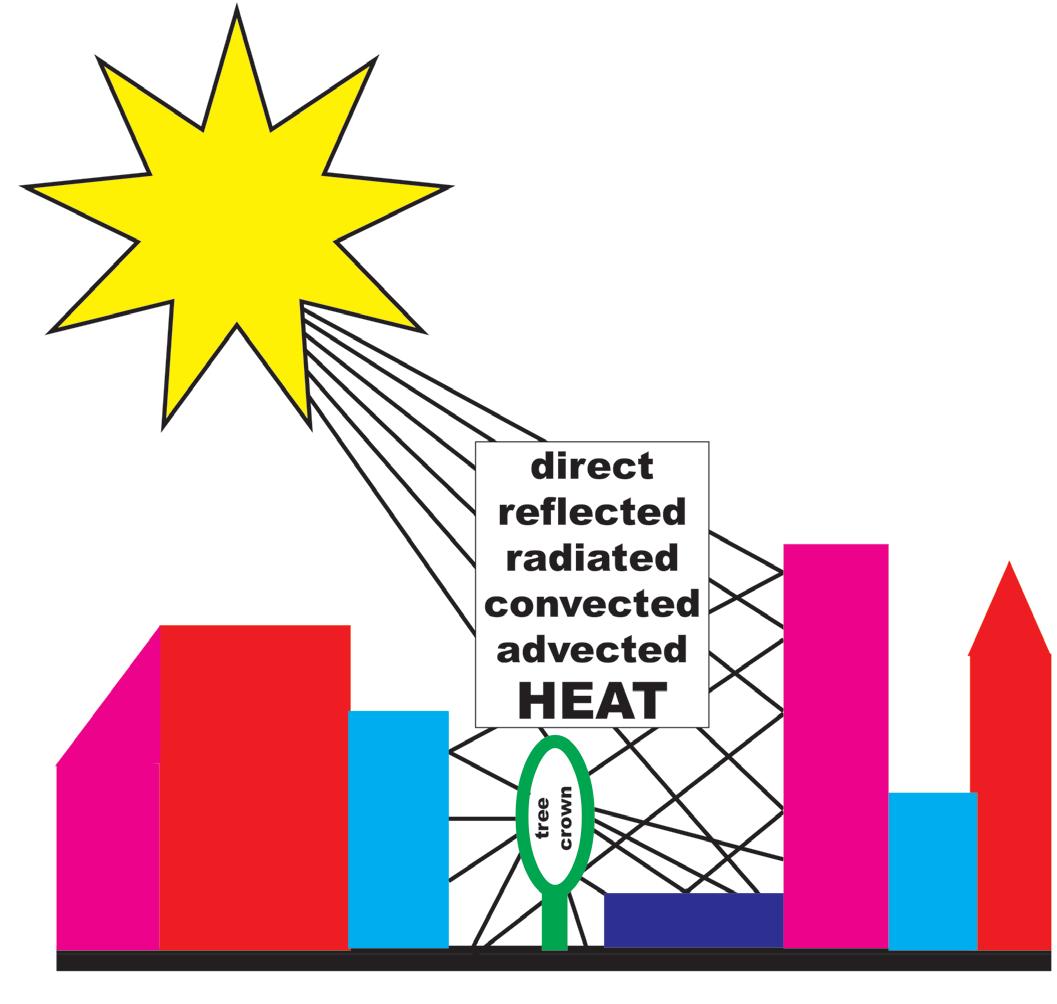
Tolerance The differences among trees to tolerating heat 4 Heat load To accurately determine tree health associated 4 loads revolve around enzyme effectiveness with food use and water evapotranspiration, an and membrane health. The better enzymes estimate of infrared (long wave) energy impact and membranes can be protected from heat to a tree is needed. Because sunlight energy effects, the more effective a tree will be in input is the same per unit area, various surfaces dealing with large heat loads. Protection or and structures on a site change the total amount deactivation of enzyme systems in trees are of heat with which a tree must deal. This heat influenced by cellular pH, solute levels in cells, load comes primarily from reflected energy from protein concentrations, and active protection surfaces, radiated energy from local materials, mechanisms. The ability of a tree to continue and energy moved onto a site in the form of functioning under significant heat loads heated air (advection). Figure 9 shows heat demonstrates tolerance. Tolerance mechanisms loading on a tree surrounded by dense, nonare primarily genetically controlled, although evaporative surfaces. each individual usually has a wide range of responses to heat stress based upon current and past stress levels. As all the different sources of energy impact a tree, tissue temperature climbs, relative humidity falls, and the air and surfaces surrounding a Estimating heat loads A major part of tree health is associated with 4 tree increase in temperature. Some portion of heat load accumulated within a tree, and on the complex site interactions among temperature, soil surface, can be dissipated by evaporation light, water, soils, and other living things. One of water. The concept of heat load is needed of the most important of tree/site interactions to allow for appreciating and correcting is avoiding and dissipation of sensible heat. The excessive tree water loss and accelerating food amount of energy delivered to a site (and how use on sites with elevated temperatures, when it is reflected, absorbed, radiated, conducted, compared with normal sites. Nonevaporative, convected, and advected) determines many dense surfaces absorb energy, quickly increase in aspects of physical and biological food and temperature, heat surrounding air, and radiate water use in trees. heat (long-wave radiation). Heat load estimates try to quantify the amount of non-evaporative, dense surfaces surrounding a tree or planting site.
Figure 9: Diagrammatic view of a tree growth area impacted by heat loading from surrounding hard, dense, non-evaporative surfaces. The heat load view factor on the tree in this diagram is 70%. Shade process Figure 10 shows energy distribution on three 4 sites: 1) a hard, dense-surfaced parking lot; 2) a tree (or awning) standing over dry soil -- which demonstrates a passive shade process; and, 3) a tree in moist soil -- representing an active shade process. All sites receive the same amount of sunlight energy. Each site uses or modifies this energy in different ways because of the surfaces which energy impacts, and because of the presence of water available for evaporation from both tree and soil. In example one (1), the parking lot receives and reflects back a total of 2000 heat units on a summer day. These are generic heat units used to show relative proportions between sites. Anything on this parking lot site is baked. The air immediately
above is heated and wind pushes this hot air over surrounding landscapes as advected heat.
The second example shown in Figure 10 is a dry site with a standing tree. The tree physically blocks energy from impacting the soil surface and creates a passively shaded zone. Instead of a tree, which can not survive without water, an awning, umbrella, or a roof on a structure would perform the same passive shading service. In this case, 400 heat units are blocked from the site. Roughly 600 heat units enter the site and 600 heat units are reflected back for a total of 1200 heat units on-site.
The third example shown in Figure 10 is a tree growing and actively transpiring on a moist soil. As before, 400 heat units are physically blocked passively by tree structure. Of the remaining 600 heat units, about 350 heat units are dissipated through water evaporation from leaves (transpiration), and 50 heat units are dissipated from soil through surface evaporation. With the addition of moisture to a site for tree transpiration, an active shade process is present which greatly reduces site heat load to 450 heat units. The presence of adequate soil moisture and a healthy tree can lead to large amounts of active heat dissipation. Evaporative surfaces and water availability allow for effective heat management on a site.
Site view factor
Figure 11 shows how heat load (i.e. Coder Heat Load Estimator) can be estimated on a site by using a view-factor containing 10 equal (36o ) observation angles. In each of 10 angle segments, the dominant surface facing a tree or planting site is recorded. Viewfactor components can include either sky and vegetation, or non-evaporative dense surfaces (hardscape). The procedure for estimating heat loading uses these ten equal angles of observation distributed around a measurement point. Every 10% or 36o of angle around this point, starting on the ground directly below, and observing along a circle which passes through zenith, is determined to have either open sky/ vegetation or non-evaporative dense surfaces facing the measurement point. Each angle segment is considered to be dominated by one or the other of these surface types.
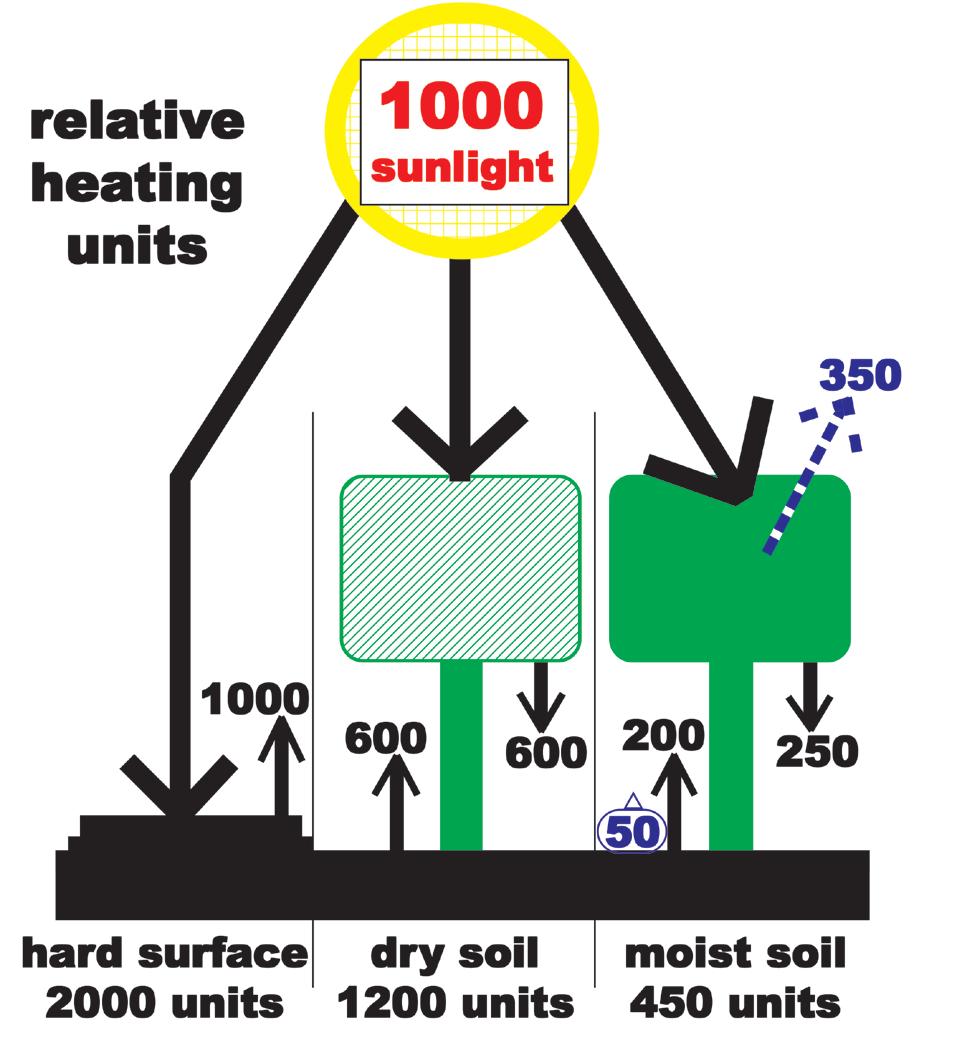
Figure 10: Relative total heating unit accumulation and components under various surface and soil conditions.
The first estimate is made along a North/South plane, and a second estimate is made along an East/West plane. The horizontal distances given in Figure 11 are based upon an observation height of 5.5 feet. The final view-factor percentage is an average between one complete 4 circle observed in a North/South plane and a second complete circle observed in an East/ West plane. The possible ranges of view-factors for non-evaporative dense surfaces facing a site are 0% (100% sky and vegetation) to 100% (100% non-evaporative dense hardscape surfaces). Remember urban canyons and dense shading from hardscapes do not necessarily eliminate increased heat load values. Each site must be examined for heat loading. How much heat? The Coder Heat Load Multiplier values for 4 various non-evaporative dense surface viewfactors (nearest 10% class) for a site or tree are given in Figure 12. For example, if the heat load view-factor average for a tree planting site was determined to be 60%, the heat load multiplier factor is 1.9. This value means tree water loss

and carbohydrate use would be ~1.9X greater than for a tree standing on a site without any hardscape (which would have a heat load multiplier factor of 1.0).
Heat impacts
Figure 11: Diagram showing how heat load can be estimated on a site using an average dominant surface view-factor from 10 equal (360) observations angles (Coder Heat Load
Estimator). (distances given above are based upon an observation height of 5.5 feet) There are many internal changes within a living tree as heat loading increases. At first, photosynthesis (Ps) decreases and respiration (Rs) increases. Maintenance requirements of chlorophyll molecules greatly increase. As heat loading continues, net photosynthesis closes down altogether. The turnover point between net photosynthesis and accelerating respiration is around 95o F. Although no net photosynthesis is occurring, chlorophyll molecules in sunlight continue to activate and generate cell and chloroplast damaging by-products.
Going ...
As heat loads increase, transpiration greatly increases simply from physical water evaporation. Stomates close. With closed stomates no carbon dioxide (CO2) can be captured and no food (CHO) can be made. Closed stomates do not prevent evaporation of water from tissues, just transpiration through stomates. As transpiration is almost stopped, heat dissipation is prevented and internal tissue temperature increase. As tissue temperature increases, more evaporation through the periderm and leaf/bud surfaces occur. Without transpiration-generated forces (water column tension), hydration, material transport, and absorption problems occur.
Figure 12: Coder Heat Load Multiplier values for various non-evaporative dense surface view-factors (nearest 10% class) for a site or tree. Use heat load multiplier to estimate increased water use and carbohydrate use in trees under various heat loads.
4
Heat increases initiate cell membrane leakage and tissue dehydration, starting with the most tender and succulent tissues, like new leaves and shoots. Within meristems (growing points or areas), cell division and expansion are inhibited, and growth regulation is disrupted. Trees rapidly use food reserves, while food transport and processing become more inefficient. In leaves, photorespiration accelerates making any photosynthesis more inefficient. Lack of effective transport mechanisms and control systems interfere with shipment and use of food reserves.
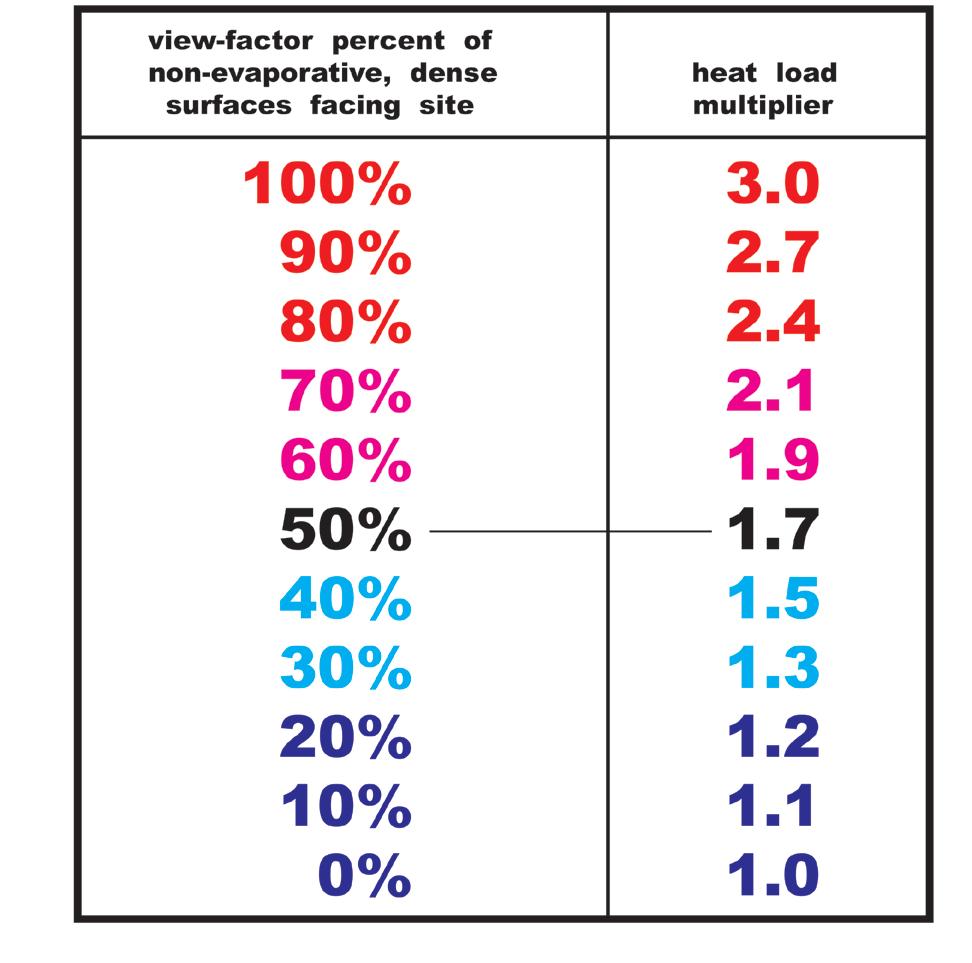
...Going.... As damaging heat load duration or 4 Therapeutics There are a number of appropriate responses to temperatures continue to increase, tree cells increasing heat load, and associated tree stress start to self destruct. Within living cells, highly and strain. Many treatments are simply treereactive and toxic materials are generated. Cell literate common sense. Other treatments can be membranes begin to fail causing intermixing of used to minimize damage and hasten recover. materials within a cell and just outside in cell wall spaces. With continued heat loading, the respiration system begins to fall apart. Growing Water!!!!! Clearly the best treatment for an increasing 4 spot deficiencies of essential elements, coupled heat load is watering, sprinkling, and misting with empty or overflowing pools of sequential tree tissues to improve water availability, reduce metabolites occur. Cells cannot work fast tissue temperature, and lessen water vapor enough to keep everything from failing. pressure deficit around tree tissues. Along with increased water supplies come increased Gone! Finally, excessive heat load leads to a complete 4 drainage demands for assuring proper soil aeration. Do not compound heat load problems loss of membrane integrity. The boundary with generation of suffocating anaerobic soil between symplast and apoplast is lost. Proteins conditions. begin to functionally collapse and breakdown.
The final result is dead cells and tissue death. These islands (lesions) of cell death expand, Disrupt heat load process! To reduce heat loads on trees, partial shading 4 leading to massive damage which surrounding can be used to reduce total incoming radiation cells can not hinder or compartmentalize. Tree but not filter-out photosynthetically active death can be a final result. radiation. Shading as little as 10-20% of the full Mid Tenn Turf, Inc. — 1/2 Page Horizontal Ad for Deep South Turf Expo Programsunlight (i.e. allowing 80% to 90% of full sun to
Daily Regional DeliveRy
Tennessee Kentucky north Carolina South Carolina georgia alabama
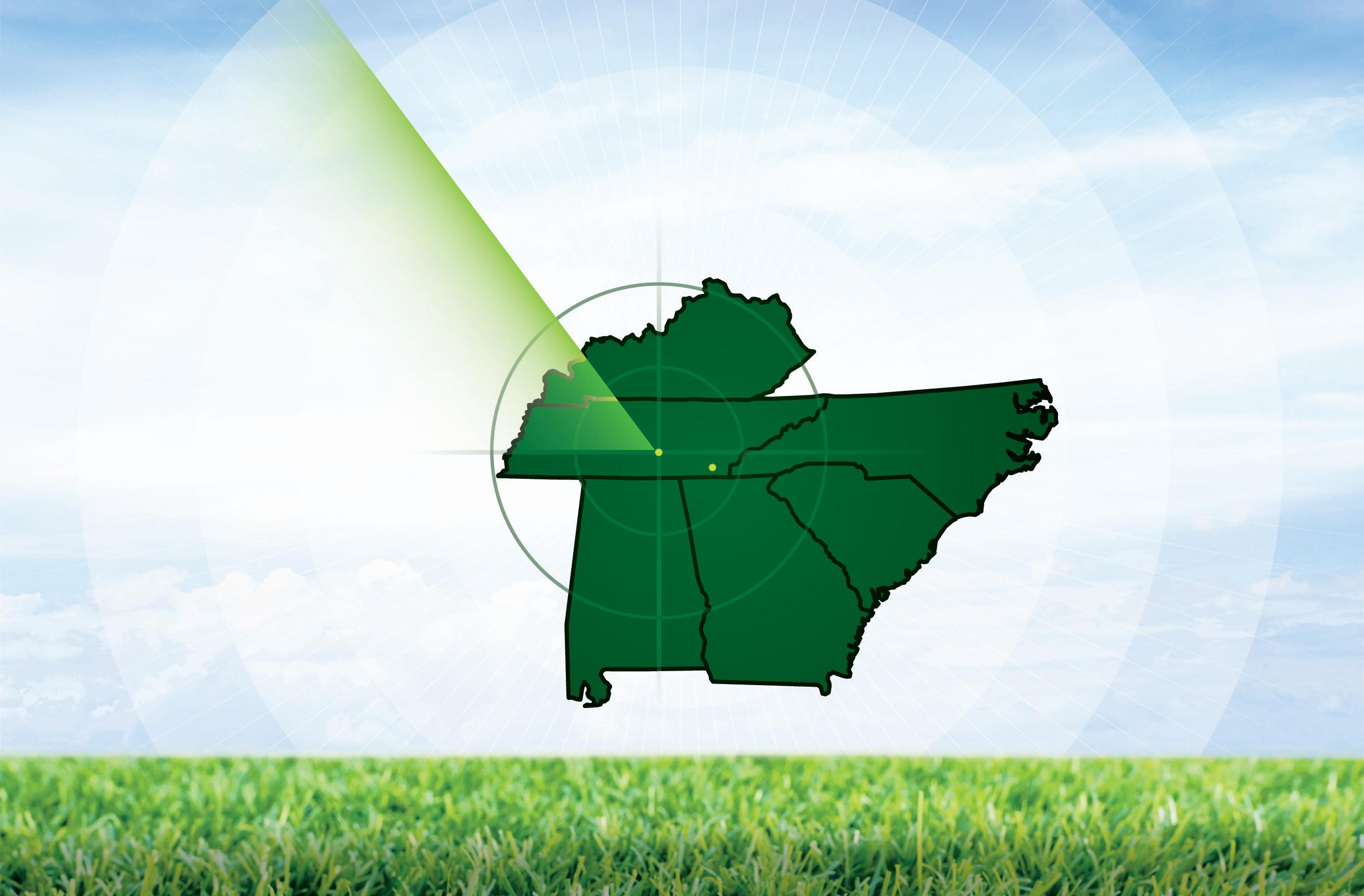
Residential Commercial golf athletic Fields
800.782.4083 | midtennturf.com
The Southeast’s PReFeRReD SouRCe
for SoD & SeRviCe Since 1986
Blue Tag Certified grasses
over 2,500 acres in Production
impact a tree and site) can reduce heat load and increase efficiency of food and water use. Prevent or minimize any soil active/osmotically active soil additions which might increase salt index or utilize water for dilution or activation.
Reflection of sunlight and muting of radiative Be cautious of pesticide applications, carefully heat using site colorants (light colors and white) noting tree and soil activity of active ingredients, and surface treatments (low density, evaporative carriers, wetting agents, and surface adherence surfaces) on hardscapes around landscapes can products. A number of pesticides require an reduce heat loads. Block or channel advected active healthy tree and site for best response. heat away from trees and soils with low density Pesticide performance under hot temperatures, (i.e. wood) walls and fences, and soil berms. and with damaged trees, may be compromised
Hardscape watering is a water intensive/ generating unexpected results. expensive procedure to quickly alter heat loads.
Pervious evaporative pavements and low density non-heat absorbing surfaces can help minimize No other stresses! For trees under significant heat loads, green4 or dissipate heat loads. wood pruning should be minimized or delayed. Mulch In moderation! A key landscape treatment is the use of mulch 4 Heat loads conspire to disrupt effective wound response, xylem transpiration pathways, and food reserve availability. Pruning should be which protect soil surfaces from direct sunlight avoided under high temperatures. Pruning will impact and minimize indirect heat load impact. not improve tree heat stress levels significantly,
The best mulches to use for this purpose are and can greatly deepen problems. low density, coarse textured, natural organic materials derived from tree tissues (not grass or One technique used in old landscapes (and garden clippings). The purpose and function seemingly forgotten in modern landscapes) was of this type of mulch is to minimize soil shade structures and wind screens. Utilization evaporative water loss while not disrupting soil of well-designed and constructed active shade gas exchange processes (i.e. oxygen (O2) into soil structures in a landscape like arbors and trellises and carbon-dioxide (CO2) out of soil). overgrown with live leaf surfaces can dissipate a great amount of heat if water is available.
Many blanket, film, and synthetic mat mulches A low-density hardscape framework covered tend to increase heat loading on a site and with live plant tissue transpires water and damage soil and trees. Size-sorted wood chips, dissipates heat. Dissipating heat structures both tree bark, pine straw, and course leaf mulch disrupts advected heat flow into a landscape work well if applied in thin layers, maintained, and conditions air flow. Evaporative surfaces are and shown to not mat or settle into a water and critical within (and surrounding) a landscape to gas impervious layer. Thin mulch layers are best manage heat loads on trees. -- reapplied often. Save additions For later! During extreme heat load periods, some 4 Heat dissipating design! Building a heat dissipating landscape with trees is challenging. Heat sources and water 4 tree and site treatments can be damaging availability must be identified and used to and should be delayed. Any and all forms of manage heat generation. Great tree-literate nitrogen fertilizer applications in or around a designs and maintenance practices must be tree should cease. Resume minimal and then installed which deal with heat problems while normal nitrogen enrichment only after full leaf monitoring other stress concerns. As in all tree expansion in the next growing season, or after management, a stress like heat loading must be soil and climate have returned to ecological recognized and treated. Do not obsess about normal growing conditions. visual symptoms, but find solutions for causes of tree stress.


